Reading
the vicious ad hominem attacks you would think that Guy McPherson is
the only one guilty of realism with his “death cult” (Nicole
Foss)
Will
Climate Change Cause Human Extinction?
by
Chris Clarke
Will we greenhouse gas ourselves right off the planet? | Photo: neeravbhatt/Flickr/Creative Commons License
27
August, 2013
In
the last few days an alarming article making the rounds on social
media has revived the idea that our species might be doing itself in
by changing the global climate. The article,
by vice.com's Nathan Curry, minces no words in its title: "Humanity
Is Getting Verrrrrrry Close to Extinction," with the extra rs in
the original.
Curry
cites sources ranging from climatologist James Hansen to admitted
doomsayer Guy McPherson to advance a startling notion: human society
has triggered enough irrevocable climate change mechanisms that we're
locked in to warming temperatures sufficient to kill us off.
It's
alarming, but is it alarmist? Could we really heat ourselves to
extinction? Maybe, but that's asking the wrong question.
All
species eventually go extinct, and things can always go badly wrong
when you're futzing with your life support system. But if a few
things happen that aren't accounted for in climate forecasts -- like
a wholesale release of methane from permafrost and seabed deposits,
there's a significantly larger chance
that most of what we humans currently think of as good places to
live will become literally uninhabitable for at least part of the
year.
Doomsday
scenarios have their fans, the aforementioned McPherson among them.
In a January
post from
his blog Nature Bats Last, McPherson suggested that Obama had turned
his back on a 2009 global climate conference because he had inside
information that it was all pointless:
In other words, Obama and others in his administration knew near-term extinction of humans was already guaranteed. Even before the dire feedbacks were reported by the scientific community, the Obama administration abandoned climate change as a significant issue because it knew we were done as early as 2009. Rather than shoulder the unenviable task of truth-teller, Obama did as his imperial higher-ups demanded: He lied about collapse, and he lied about climate change. And he still does.
To
be fair, McPherson does allow in that same post that a colleague's
prediction that all life
on Earth will die before mid-century "appears premature."
But
running through articles like Curry's and websites like McPherson's
is a startling scientific claim that has merit: there's a chance
that large parts of the world will get hot enough to kill humans
outright.
Climate
change threatens to alter the way we live our lives in a whole lot
of ways, from changing the frequency and severity of storms and
droughts to causing crop failures to promoting increases in pest
animals and diseases. Clever animals like us may well be able to
come up with ways to mitigate such horrors.
But
as global temperature warms, some reserachers have said that some
places run the risk of getting too hot and humid for humans to
survive in for more than a few days.
Humans,
like other mammals, generate heat just by being alive, and we rely
on our surroundings as sinks for that heat. Even if the air is
considerably hotter than our body temperature, we can cool ourselves
by sweating: water evaporating from our bodies takes a lot of heat
with it.
At
100 percent humidity, a temperature of 35°C -- 95°F -- proves
fatal within days or hours to people in good health in ideal
theoretical conditions -- as James Hansen puts it in a passage
quoted by Curry, "even a person lying quietly naked in
hurricane force winds would be unable to survive" such
temperatures. If we can't shed our waste heat, our organs fail and
death results.
And
that's for a healthy person tring to get as cool as possible while
relaxing. People who aren't in top physical condition or who must
continue to work can drop dead from less extreme conditions.
That
"temperature at 100 percent relative humidity" is referred
to as a "wet bulb temperature," a slightly confusing
mathematical concept named for the easiest way to measure it:
draping a thermometer bulb with a wet, non-insulating cloth.
As
almost everyone reading this will know from personal experience,
temperatures of 35°C by themselves aren't uniformly deadly: it is,
as they say, not so much the heat as the humidity. That world record
air temperature set
a century ago in Death Valley of
132°F would have needed an accompanying atmospheric humidity of 26
percent to work out to that fatal 35° wet bulb level. As I write
this in Joshua Tree on August 27, in the days after a series of
tropical storms dumped water into the desert, the relative humidity
is 52 percent, it's 86°F, which works out to a slightly muggy but
still comfortable wet bulb temperature of 22.5°C. Los Angeles, at
83° and 44 percent humidity, is a comfortable 19.7°C wet bulb.
Very
few places on the planet ever exceed a wet bulb temperature of 30°
or 31°C.
But a study released
in 2010 by researchers Steven C. Sherwood and Matthew Huber of the
University of New South Wales and Purdue University suggests that if
the global climate increases by an average of about 10°C, which is
not completely implausible by the year 2200, vast areas of the
planet could regularly exceed that deadly 35°C wet bulb
temperature, making them essentially uninhabitable, at least for
part of the year for anyone without abundant reяources.
Increases
in wet bulb temperature don't track directly to increases in air
temperature for a couple reasons. For one thing, wet bulb
temperature is also influenced by barometric pressure. More
importantly, if you heat a mass of air, its relative humidity will
decrease unless you add more water to it. What that means is that
even with global temperature increase, the parts of the planet that
are now deserts generally won't see much of an increase in wet bulb
temperatures.
What
parts of the world will approach that fatal 35°C? Places where
there's a lot of water laying around for that heated air to suck up.
Places like India. West Africa. The Amazon. Coastal China and
southeast Asia. And essentially all of what is now the eastern
United States.
Areas
shaded in lavender and purple may become uninhabitable with a 10°C
global temperature rise | Photo: Purdue University
As
Sherwood and Huber said in 2010, our technology may not offer those
trying to live in these affected areas much help:
In principle humans can devise protections against the unprecedented heat such as much wider adoption of air conditioning, so one cannot be certain that... 35°C would be uninhabitable. But the power requirements of air conditioning would soar; it would surely remain unaffordable for billions in the third world and for protection of most livestock; it would not help the biosphere or protect outside workers; it would regularly imprison people in their homes; and power failures would become lifethreatening. Thus it seems improbable that such protections would be satisfying, affordable, and effective for most of humanity.
If
temperatures increase by 11° or 12°C, said Sherwoood and Huber,
we'd lose most of our species' habitat.
A warming of 11-12 °C would expand these zones to encompass most of today's human population. This likely overestimates what could practically be tolerated: Our limit applies to a person out of the sun, in gale-force winds, doused with water, wearing no clothing, and not working.
How
likely is an increase of 10°C by 2200? The Intergovernmental Panel
on Climate Change (IPCC) offered a number of scenarios in its Fourth
Assessment Report in 2007, one of which was based on the assumption
of "a future world of very rapid economic growth, global
population that peaks in mid-century and declines thereafter, and
the rapid introduction of new and more efficient technologies."
If that world was primarily focused on fossil fuel use, said that
report, the road ours seems to be headed down, temperatures could be
as much as 6.4° higher by 2100. In a renewable-centered world, that
increase could be kept to 4°C or lower. But few expect temperatures
to stop rising in 2100, regardless of the scenario.
The
website Skeptical Science offered a look at best-
and worst-case climate scenarios in February,
with the best-case scenario modeled on the assumption that doubling
our atmospheric CO2 will cause 2°C of global temperature
increase, and the worst case scenario making that 4°C for the same
input of CO2. Their best-case scenario showed between 2° and 3°C
increase by 2150 for the two most likely industrial strategies for
emitting carbon, and their worst-case scenario pumped that up to a
range of 5° to 7°C.
Skeptical
Science offers two sobering caveats for this data:
There is a critical point that must be made here -- the worst case scenario is just as likely as the best case scenario... And remember, we haven't accounted for account for possible changes in the carbon cycle, like reduced ocean carbon absorption or releases from melting permafrost, or slow feedbacks which may amplify global warming further in the future.
The
total eventual effect of those complicating factors Skeptical
Science omitted from its calculations is unknown, but it's near
certain that at least some will occur, and it's also near certain
that their cumulative impact on global temperatures will be
unpleasant. For instance: one of the more likely effects of a very
optimistic 2°C global increase in temperature will be that polar
regions increase by 4°C. That means that huge areas of permafrost
soild will be altered. Permafrost is thought to hold about twice as
much carbon as the atmosphere does at present: when it melts, that
carbon enters the atmosphere either as methane, a devastatingly
potent greenhosue gas, or as carbon dioxide. Methane once
sequestered in permafrost is already entering the atmosphere. Even
if our greenhouse gas emissions stopped today, the UN Environment
Programme estimates it would take a century for the resulting
permafrost emissions to peak, and another century to drop back down
to anywhere close to their current levels.
The
IPCC will be releasing its Fifth Assessment Report in stages coming
next month, so we'll see how the world's leading climate science
body has updated what it thought in 2007. A 10°C increase in global
temperatures by 2200 would seem far more likely than any of us would
like. Which means that, according to Sherwood and Huber's
projections, 58 percent of the world's current population now lives
in areas with a good chance of being uninhabitable in 190 years.
Loss
of habitat is the major cause of extinction, and a species that
loses 58 percent of its habitat is in trouble. The Sumatran elephant
is now considered critically endangered
after losing 70 percent of its original habitat. We're better than
any other species at shifting from one habitat to another, but even
those skills have limits. How well will our descendants on the U.S.
Pacific Coast fare when they're faced with accomodating migrants
from all of North America east of the Missouri River? Or from the
likely Death Zone in Asia?
Conflict
over resources and space leads to wars and other conflict, and it's
very likely that if Sherwood and Huber's projections come to pass,
life will be excruciatingly bad, even in places where the wet bulb
temperatures never get close to 35°C.
Will
we go extinct? There's some thought that humans have already passed
through a near-extinction event, related to the Toba eruption about
70,000 years ago, that may have reduced our total global population
down to 15,000 people or fewer in southern Africa. That theory is
questioned by some who cite the possibility of other survivng bands
of humans. Either interpretation offers us hope for our species:
humans can survive horrible catastrophes and rebuild.
Which
means the question may not be so much "will we die out" as
"will we wish we had." If humans were to go extinct, the
earth would at least have a chance to repair itself, evolve new
biodiversity, and move on. But having the globe sprinkled with
scattered bands of a few hundred survivors, each desperately
scraping whatever sustenance might come from the planet their
ancestors ruined? That's a much more frightening prospect for both
the planet and our great great grandchildren.
Chris
Clarke is a natural history writer and environmental journalist
currently at work on a book about the Joshua tree. He lives in
Joshua Tree
From summer, last year
Ocean
Heat Dome Steams Coastal China: Shanghai to Near Very Dangerous 35
Degree Celsius Wet Bulb Temperatures This Week
13
August, 2013
China
Falls Under Suspicion of Covering Up Deaths as Ocean Heat Dome
Expands to Blanket Korea and Japan



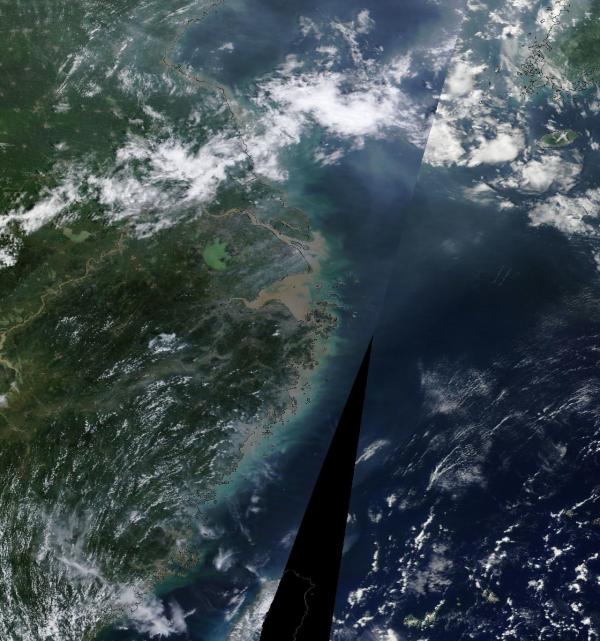
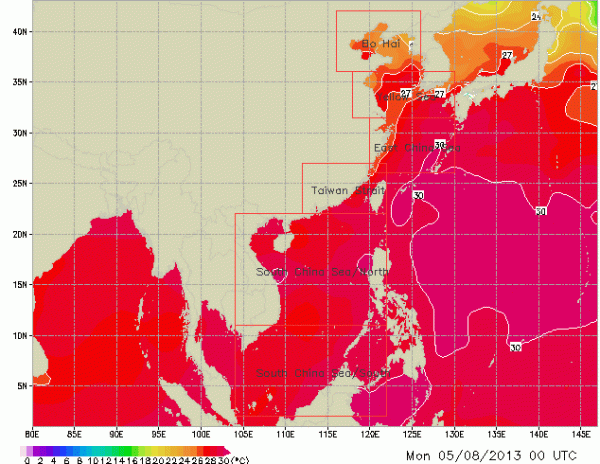
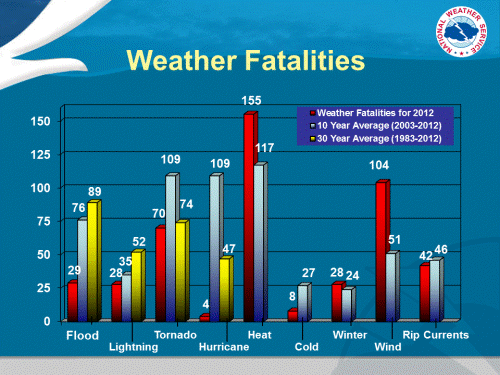

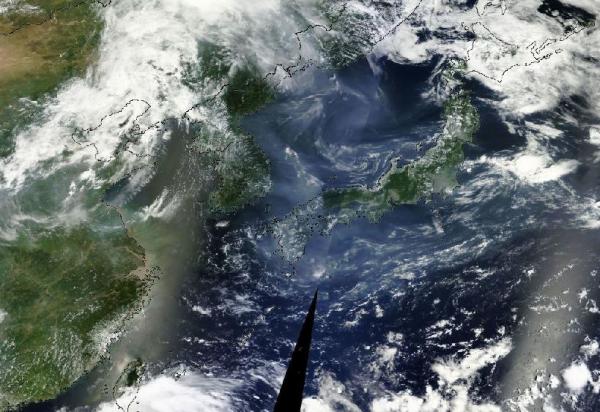
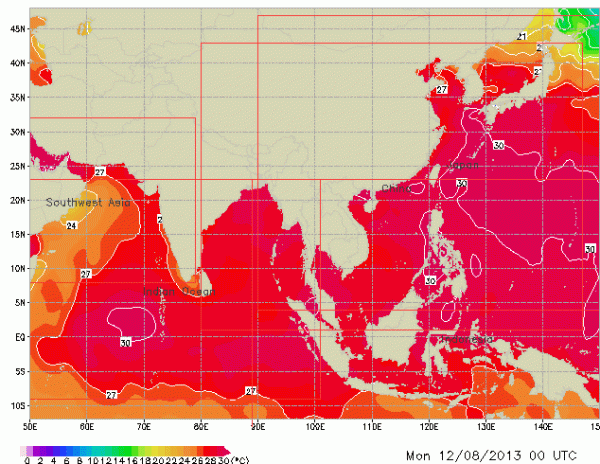
No comments:
Post a Comment
Note: only a member of this blog may post a comment.